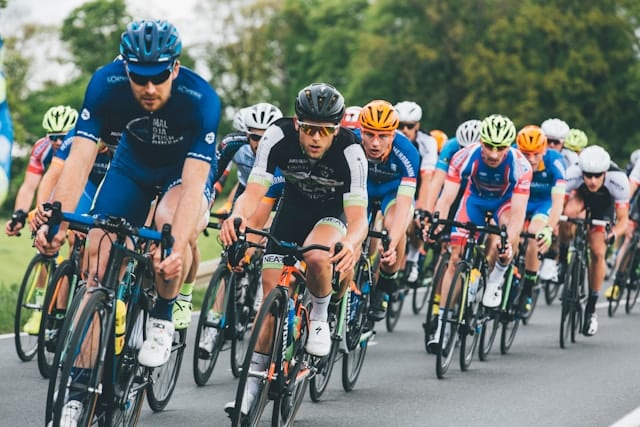As an ardent cyclist, you will undoubtedly recognise the importance of pacing. It is a crucial factor that determines your performance, particularly in a mountain time trial. The undulating terrain, the fluctuating wind, and the challenging course all demand a well-thought-out strategy. Your speed, energy output, and endurance are all put to the test. This article will delve deep into understanding the optimal pacing strategy for cyclists in a mountain time trial.
The Power of Pacing
Pacing, in the context of cycling, refers to the distribution of energy over the course of a race. The optimal pacing strategy involves maintaining a consistent speed and output, minimising energy wastage and maximising performance. Cycling is not just about physical prowess, but also about the strategic management of your energy stores.
Dans le meme genre : How Can Advanced Sleep Monitoring Improve Recovery for Long-Distance Runners?
Understanding the power of pacing starts with recognising that each race segment requires a different energy expenditure. Uphill sections demand more power and energy, while downhill sections allow for energy recovery. As such, a good pacing strategy should consider these variations.
The Role of Time in Cycling Trials
Time plays a pivotal role in determining your performance in cycling trials. It is not just about how fast you cycle, but also about how you manage your time. The start of the race is particularly crucial. A too-aggressive start could lead to energy depletion before you reach the finish line. On the other hand, a too-conservative start could leave you with too much ground to cover in the latter part of the race.
A lire en complément : What Is the Most Effective Warm-Up Protocols for Amateur Golfers to Prevent Lower Back Injuries?
A successful mountain time trial requires a well-executed pacing strategy, dictated by the terrain’s demands and your personal cycling strengths. The optimal start strategy is to start at a pace that you can maintain throughout the race, taking into consideration the course’s difficulty and your physical condition.
The Will to Win: Mental Strength and Strategy
A mountain time trial is not just a physical test, but a mental one as well. Your will to win, your ability to endure pain, and your mental strength all contribute to your performance. It is your mental fortitude that keeps you going even when your body is screaming for respite.
A good pacing strategy incorporates this mental aspect. It is about knowing when to push hard, when to hold back, and when to conserve energy. It is about understanding your body’s signals and responding appropriately. It requires a deep understanding of your physical limitations and cycling abilities.
How Wind and Course Affect Your Pacing
The wind and course are two external factors that can significantly impact your pacing strategy. Headwinds and tailwinds can alter your speed and energy output. Uphill and downhill sections demand different energy expenditures.
In conditions of a headwind or uphill sections, it might be beneficial to reduce your pace slightly to conserve energy. Conversely, in a tailwind or downhill sections, you might want to increase your pace to capitalise on the conditions. Similarly, the course’s technicality can also affect your pacing. A more technical course might require a slower pace, while a less technical course might allow for a faster pace.
Training for Optimal Performance in a Mountain Time Trial
To perform optimally in a mountain time trial, specific training is necessary. This includes endurance training to improve your stamina, strength training to enhance your power output, and interval training to boost your speed.
Effective training also involves practising your pacing strategy. This might involve training on a similar course to the race or using a cycling simulator. It’s about understanding how your body responds to different paces and learning how to manage your energy output effectively.
Remember, the optimal pacing strategy is not a one-size-fits-all approach. It is highly individual and depends on your cycling abilities, physical condition, and the specific race conditions.
Unlocking Your Potential: The Role of Monitoring Tools in Pacing Strategies
Performance monitoring tools such as a heart rate monitor and power meter are key to unlocking your optimal pacing strategy. These tools provide real-time data, allowing you to gauge your effort and manage your energy output effectively.
A heart rate monitor measures your heart rate, which is a reliable indicator of your effort level. It provides valuable information about how hard your body is working. Monitoring your heart rate during a time trial can help you keep your effort consistent, preventing you from pushing too hard or too little.
A power meter, on the other hand, measures your power output. It provides precise data about the amount of power you are producing at any given moment. This is crucial in a mountain time trial where the terrain and conditions are constantly changing. By monitoring your power output, you can adjust your effort to match the demands of the race.
Incorporating these tools into your training plan can significantly improve your pacing strategies. For instance, you can use them to simulate race conditions and practise maintaining a consistent power output and heart rate. You can also use them to track your performance over time and identify areas for improvement.
Even with these tools, however, it is important to listen to your body. No tool can replace the nuanced signals that your body sends. Pain, fatigue, and exertion are all indications that you may need to adjust your pacing strategy. Don’t let the numbers dictate your entire race. Use them as guides, but always listen to your body.
Conclusion: Paving the Way to Success in Mountain Time Trials
In conclusion, mastering the mountain time trial is not just about physical strength or cycling skills. It is about understanding the complex interplay of numerous factors – the terrain, the weather, your body’s response to different conditions, and the mental game. The optimal pacing strategy is a dynamic one, changing with the varying conditions and challenges that each race brings.
To pave your way to success, focus on building a robust training plan, incorporating both physical training and pacing strategy practice. Utilize performance monitoring tools, such as a heart rate monitor and power meter, to gather real-time data and refine your pacing strategy. But above all, listen to your body. It knows best.
Remember, the journey to becoming a successful mountain time trial cyclist is a marathon, not a sprint. With consistent effort, strategic planning, and a strong will to win, you can conquer any mountain time trial. Happy cycling!











